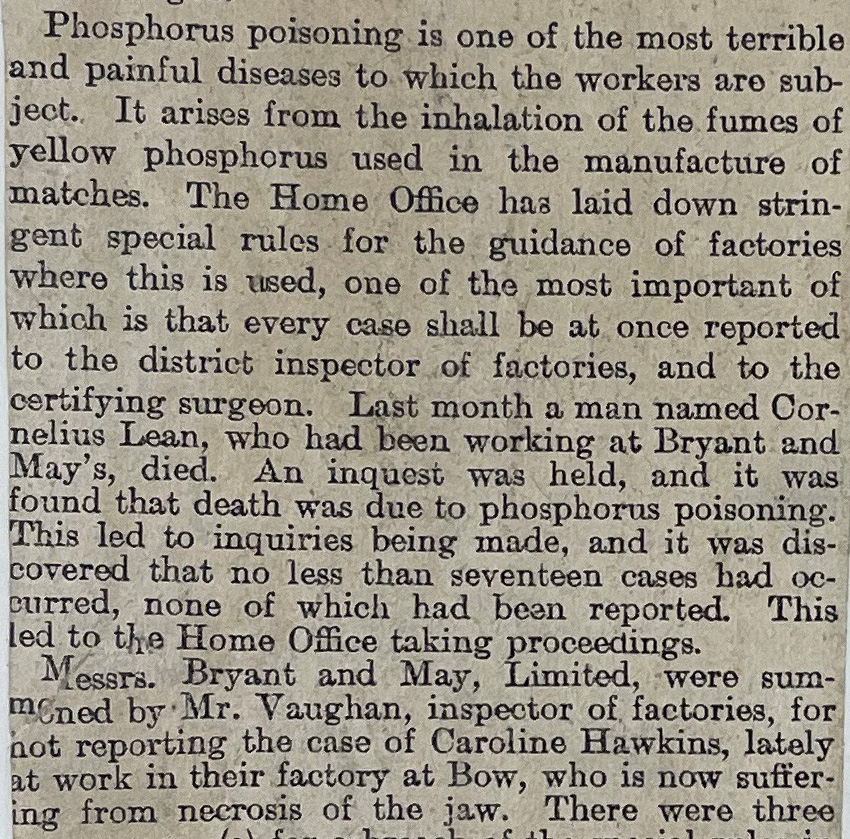
An article from a newspaper entitled ‘The Daily Chronicle’ describing a case of ‘phossy jaw’, 2 June 1898, Catalogue ref: HO 45/9849/B12393D.
Transcript
[Necrosis means the death of living tissue in a particular area of the body through injury or disease.]
Phosphorus poisoning is one of the most terrible and painful diseases to which the workers are subject. It arises from the inhalation [breathing in] of the fumes of yellow phosphorus used in the manufacture of matches. The Home Office has laid down stringent [tight] special rules for the guidance of factories where this is used, one of the most important of which is that every case shall be at once reported to the district inspector of factories, and to the certifying surgeon. Last month a man named Cornelius Lean, who had been working at Bryant and May’s, died. An inquest [official investigation] into a death was held, and it was found that death was due to phosphorus poisoning. This led to inquiries being made, and it was discovered that no less than seventeen cases had occurred, none of which had been reported. This led to the Home Office taking proceedings. Messrs. Bryant and May, Limited, were summoned by Mr. Vaughan, inspector of factories, for not reporting the case of Caroline Hawkins, lately at work in their factory at Bow, who is now suffering from necrosis of the jaw
…
Sources 3a – e: Read these extracts from ‘The Daily Chronicle’ describing a case of ‘phossy jaw’.
Phosphorus is a chemical that glows in the dark and burns easily, which is why it was used to make matches.
- What was ‘phossy jaw’?
- Why is this newspaper reporting a story about phosphorus poisoning at the Bryant & May factory?
- How had ‘phossy jaw’ affected the workers?
- Do you think the result of the trial was a fair one?
- If the firm Bryant & May knew about the problem of ‘phossy jaw’, why do you think they tried to keep it quiet for as long as they did?
- How have these events been reported in this newspaper?
- Why was the match girls’ strike and the development of ‘new unionism’ important in the context of the information provided by this source?
